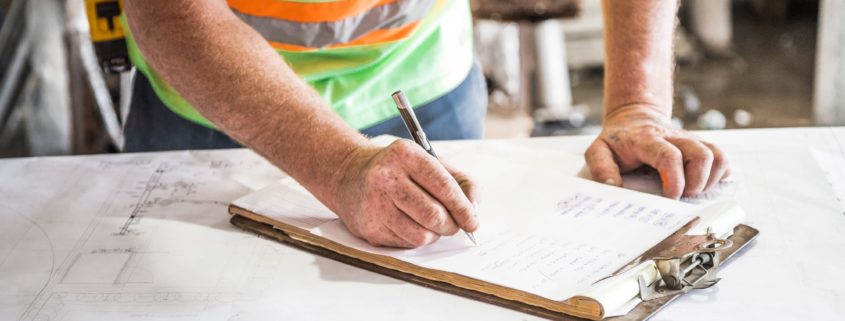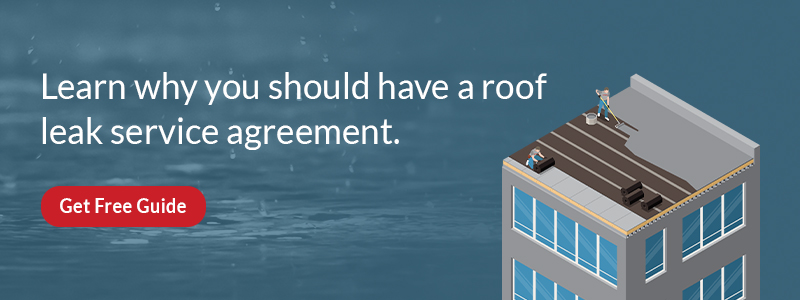Thunderstorms, heavy rain, and snow can wreak havoc on your commercial roof, and these types of severe weather events are well-known in Ohio during almost every season. Are you doing enough to protect your roofing investment?
Expensive emergency repairs and premature roof replacement are just some of the costs you can face as a building owner without the right roof maintenance. However, you need more than sporadic inspections to maximize the life of your roofing system. Roof asset management, by comparison, supports the full lifecycle management of your roof.
→ Download Our FREE Guide To Understand the Importance of Roof Leak Service Agreements
TEMA Roofing Services proudly works with customers to develop a roof asset management plan specifically tailored to meet individual business needs and the conditions of each commercial roof. Read on to learn more about roof asset management and how it can help you control your commercial roofing costs.
What Is Roof Asset Management?
The goal of a roof asset management program is to ensure that roofing systems reach or exceed their full-service life. To achieve this goal, a roof asset management program uses a systematic and routine process. It consists of preventive inspections and targeted repairs of existing roof system issues.
Long story short, roof asset management is a proactive process rather than a passive-reactive approach to maintaining your commercial roof system.
Benefits of a Roof Asset Management Program
An effective roof asset management program will extend the life of your roof and lower your expenses. It provides you with several important benefits:
Keeps Your Warranty Intact
Performing preventive maintenance is often a condition for keeping your roof warranty valid, and a quality roofing contractor will work with you to set up a roof asset management program that meets the terms of your warranty. If you do end up needing roof repairs, you’ll likely save money with the coverage your warranty provides.
Fewer Service Calls
Regular maintenance prevents problems from starting or from getting worse once they start. A roof asset management program can help your business avoid costly emergency repairs by fixing small problems during scheduled maintenance inspections.
Budget Planning
It’s time to stop thinking of only the short-term for your roofing asset. Scheduled maintenance roof inspections let you know what roof repairs may be necessary for the future. You’ll also have a better idea of how much life your current roof has left before you’ll need to replace it.
With roof asset management, you have time to establish budgeting for future repairs or the replacement of your roof.
Avoid Interruptions to Your Business
Problems with your roof can have a significant impact on your business or the businesses within your building. The interior of your building and your business assets could be damaged and roofing issues could force you to shut down operations, which costs money!
A roof asset management program helps to avoid these losses.
Having advance notice of potential repairs gives you time to plan the work around your business schedule. You can have your roofing contractor do the work outside of business hours, plan a temporary closure, or reroute business to a different side of the building. In the end, your business can keep running, and you avoid losing time and money.
How to Set Up a Roof Asset Management Program
Starting a roof asset management program takes several steps. Your roofing contractor will inventory the current state of the roof system to create a plan for any necessary repairs and set a maintenance schedule.
Roofing Design and Installation
If you’re setting up a roof asset management program in connection with installing a new roof, you can start with the design of the new roofing system. The design, materials, accessories, and installation all form part of your management plan.
As-Built Information
The implementation of most roof asset management programs happens after the roof has been in place for some time. In these cases, the first step is to document the as-built information for the roofing system. As-built data includes things like the roof type, insulation, drainage, slope, deck type and flashing type.
Roof Condition
Next, the commercial roofing company completes a condition assessment to inspect the condition of the roof system. This survey should identify any defects, their severity, and how many there are.
This initial documentation establishes a baseline for your business’ roofing system and will only need to be updated in subsequent years.
Prioritize Roofing Projects
Documenting the process and scope of any necessary repairs lets you prioritize what to complete first. An effective roof asset management program will outline maintenance tasks in order of importance, which is especially important if you have more than one facility to maintain.
Roofs that leak or have other significant problems are typically the highest priority. Roofs that will soon develop problems are second. The lowest priority are commercial roofs that currently have no foreseeable problems.
Documenting Your Roof Asset Management
Documentation is an important part of your roof asset management. You should have convenient access to information including:
- Drawings and specifications for new roof construction
- As-built data for existing roofs
- Records of repair and maintenance work
Any photographs that result from inspections should be part of the accessible documentation, as well.
Many experienced commercial roofing companies will give you online access to the documents for your roof asset management plan. (This gives you the flexibility to view your roof information whenever and wherever you need it.)
However, as with any data, remember that your roof asset management plan is sensitive information about your business. Be sure that the system your roofing contractor uses has data storage and backup that is secure and reliable.
Long-Term Facilities Planning
If you’re a property manager or facility manager, roof asset management should be part of the long-range plan for your facility’s operations. After you make the initial investment, you’ll almost certainly get a worthwhile return and the savings will accumulate over time.
Additionally, with a proper maintenance program in place, you’ll save money by needing fewer roof repairs and spending less time repairing parts of the roof. You can also cut costs by reducing your energy use and extending the life of your roof. (Reducing the number of times you have to replace the roof over the life of the building will obviously result in significant cost savings.)
Finding the Right Commercial Roofing Company
When it’s time to start protecting your roof with effective roofing system management, you need to make sure you’re working with the right roofing contractor. TEMA Roofing Services is a Youngstown-based commercial roofing company with 50 years of national experience.
No matter what type of roofing system you have, our roof assessment methodology and maintenance services will keep your roof secured and safe. In fact, our roof asset management program is proven to reduce leaks and extend the life of your roof.
Contact us today for a free consultation, and let’s start designing the plan that will keep your roof in the best possible condition for years to come.






